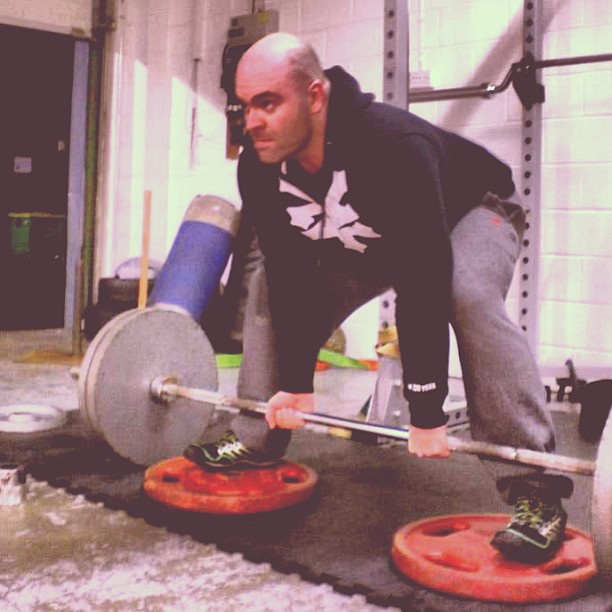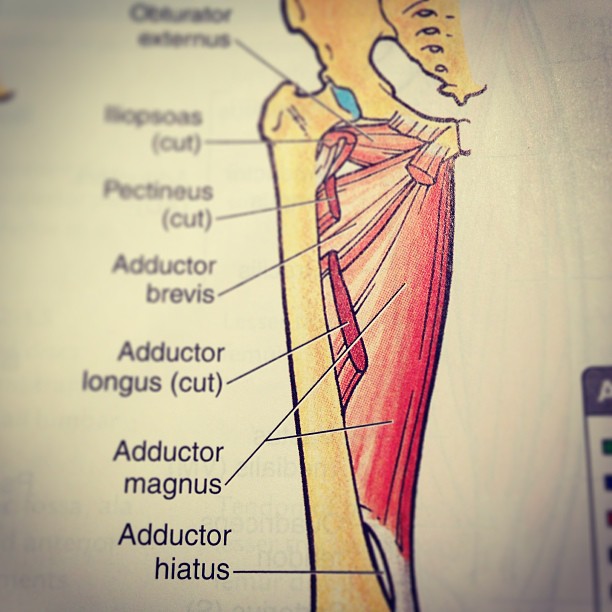Sumo Deadlifts and Angry Groins: The Reasons, Discoveries, and What You Can Do.
Ask any strength coach whether they prefer squats or deadlifts and they’ll probably have a strong opinion on which exercise gets the best results for their athletes. Some coaches even favour one exercise whilst forgetting about the other:
“We squat but we never deadlift”
- OR – “We deadlift but we never squat”
(Side note: I stopped my athletes squatting over 12 months ago and we now focus solely on the deadlift. The reasons for this change were that lack of squatting mobility, hours of low intensity work for technique and the need for (read: lack of) extremely strong abdominals and lower back were all extremely limiting factors in the squat and as my job is to get fast results for each athlete, time consuming exercises and programmes have to go! Put simply; deadlifts allow quicker progress for my clients).
The need to focus on the 5 human movements is well documented by coaches, but time constraints and the need for elite athletes to master a small set of skills sometimes leads us to drop a couple of these movements from a program in order to become incredibly proficient in one or two exercises.
It is important to simplify programs to get the best results
…for some coaches this means programs will be based around deadlifts and bench or overhead press. For others this may mean squats and Olympic style overhead work (push jerks, push press etc.) and yet others may use any combination of the 5 human movements that seems like the best fit for the athlete and perform them multiple times a week.
My strength training systems simply revolve around variations of the deadlift and bench press for most athletes (remember this for later!).
The inevitable problem with this approach is, of course, that you aren’t training all of the human movements, and whilst that may not show up as a weakness in competition, it may compromise the athletes movement ability AKA they will one day find themselves in an awkward position and won’t have the strength or the mobility to control themselves. This means injury.
High external force + internal weakness + stiff joints = injury
One method I use with my athletes is to perform mobility exercises as filler in their rest periods. So they may deadlift and then stretch/mobilise their hips back to back for 3-5 sets. Every athlete that I train gets assessed for movement issues and generally their filler exercises are prescribed specifically to correct these issues.
However recently I’d say around 50% of my clients have complained of a strange groin/hip flexor/hamstring tightness during or immediately after sumo deadlifts. I passed this off as simple hip flexor tightness and prescribed soft tissue work on the hip flexor/psoas area and a couple of basic stretches.
I asked if ball rolling psoas and hip flexor stretches helped the pain….it did help the tightness but the niggling pain was still there. Then one of my clients (we train in groups so this was a cool little training discussion between 5 of us!) dropped into a goblet squat and began pushing his knees out whilst telling me “This stretches it!”
Then I realised the obvious….
We train deadlifts, chins, bench, various carries and sprints
……AND NO SQUATS!
Could the lack of squatting been the cause of the pain? I asked my athletes if their hips felt tight (Side note: the thing you gotta remember is that some people will tell you when they’re in pain and need help and others will keep quite right up until they snap something….always ask questions!) and the consensus was that the majority felt that they needed to stretch something along the front ‘crease’ of the hips…
The answer just jumped up and hit me in the face! It wasn’t a certain stretch or mobility exercise that we needed to prescribe, it was the fact that these guys were doing 20-50 reps of sumo deadlift each week which was tightening up their hip adductors and hamstring insertion points with fairly straight legs and hip joints. Our mobility work wasn’t fixing the problem because we never took the hip past parallel – we weren’t mobilising the bottom of the squatting movement!
Sumo deadlifts strengthen and tighten the hip adductor muscle group, one of the main adductor muscles is Adductor Magnus.
Adductor Magnus has two proximal attachments. The adductor part originates from the inferior ramus of pubis (lift your knee up and feel deep within the crease of the hip) and the hamstring part originates from the ischial tuberosity (the bony point underneath your bum cheek).
So Adductor Magnus has a ‘hamstring’ part, hence the feeling that your hamstring is tight, but of course, hamstring stretches won’t stretch your adductor. So nothing works until you start stretching your groin, but then most groin stretches won’t help stretch the hamstring part of Adductor Magnus because you have to flex the hip joint whilst abducting the knee/leg/hip to stretch the right areas – AKA squatting and pushing your knees out. KNOWLEDGE!
When Adductor Magnus gets angry and pulls on both these areas it feels like a deep groiny/hamstring/hip flexor type of tightness. Exactly the symptoms that my clients were experiencing! The best way to fix this tightness is to drop into a goblet squat and just push the knees out, but I’ve found a way to make this stretch much more effective by adding a band and a bit of stretching horsepower! Watch the video below for details:
http://youtu.be/E8JEFydnVpI
So it seems that training the 5 human movements is all about equilibrium, leave a movement out and you can end up with strange imbalances as some muscles become worked more than others. Luckily we stopped this issue before it became a major problem. What’s that you say? You think that we’re gonna squat all the time now to balance things out? Nope.
I’m still going to push deadlifts as the main lower body exercise for my clients because they:
- Typically allow more weight to be lifted when compared to squats.
- Almost eradicate the eccentric movement portion (as we drop the bar quick after lockout…no controlled lowering) and thus reduces muscular stress and allows quicker recovery.
- Strengthen more muscles than squatting.
- The higher hip, straighter leg position is more applicable to running sports than squats. It is the ideal running/jumping start position. It’s also the exact position of scrummaging, rucking and tackling for rugby players (which make up the majority of my clients).
But what I am going to do now is stretch out and mobilise the squat position. So whilst we won’t be spending any time on strengthening the movement, we’re going to spend a lot of time (in the rest periods between heavy deadlifts of course!) loosening up the squat movement and thus improve movement quality.
It’s something to think about if you spend a lot of time deadlifting, or even sumo deadlifting like we do at Raw Strength. So even if you don’t need to be super strong in every human movement, spend a little time keeping each one agile and mobile and you’ll move better, perform well and have a great balance of strength and mobility throughout your whole body.
Get to work!
Anthony Shaw
I offer online and in-person coaching programs to get you bigger, stronger, faster and injury free for your sport. The first session is always free, no strings attached. Just email me at Rawstrengthgym@gmail.com or visit the SIGN-UP page to get started on your journey to becoming a winning athlete!


